Film Inquiry Recommends: Nuclear Themed Films

Alex is a 28 year-old West Australian who has a…
Over at our official Facebook page, we are currently posting daily film recommendations, with each week being a different theme. This is a collection of those recommendations! This week’s theme is Nuclear based films, a topic which since the 1950’s has produced a wide array of different films, from Stanley Kubrick’s satire Dr. Strangelove, to the subtle Kevin Pollak vehicle Deterrence. We have highlighted some great films to emerge from this hefty subject matter.
1. Miracle Mile (1988, Steve De Jarnatt)
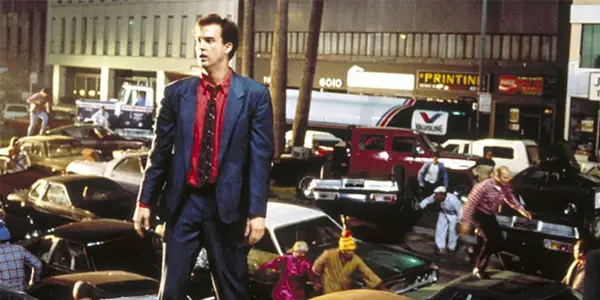
To best describe this film, think Martin Scorsese’s After Hours, except for instead of the main character trying to get home, he’s trying to escape from a possible nuclear strike. Yes, the premise of Miracle Mile is quite striking and the film lives up to its alarming premise. Miracle Mile is about Harry Washello, a lonely musician who is instantly struck by charming waitress Julie Peters, who both agree to go on a date later that evening.
Whilst waiting for his date at a local diner, Harry answers a ringing phone box and learns that in 60 minutes, an anonymous country will launch a full nuclear war against America. Stuck between trying to comprehend the information, believing if it’s legit or not and finding his lost date and escaping the town becomes a series of errors and accidents, whilst the town and society start to slowly wise up on what’s happening, cranking up the tension continuously in the film.
Anthony Edwards and Mare Winningham are both great in the film, really humanising their characters and having legitimate chemistry, making us really care about them and wanting them to successfully get away from all the destruction. The different set pieces set up are really well shot by Steve De Jarnatt, who sadly only made one film after this (he went on to TV work for the rest of his career). Miracle Mile is a harder film to come by nowadays, but has been recently been released on Bluray in America, which has brought some much needed attention towards this sadly under-seen film.
2. A Boy and His Dog (1975, L.Q. Jones)
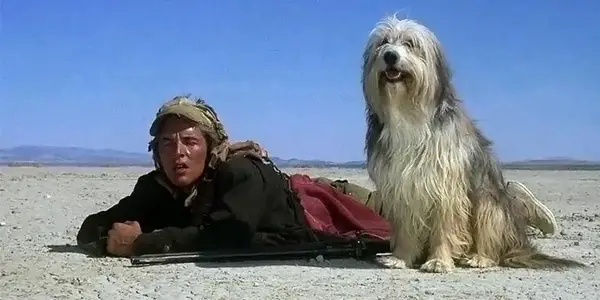
L.Q. Jones joins the ranks of Charles Laughton and Jack Lemmon, actors turned directors who only made one film, but a damn good film. L.Q. Jones, a favourite of Sam Peckinpah, directed this offbeat comedic post-Nuclear war film, about Vic (a very young Don Johnson) and his telepathic dog Blood (voiced by Tim McIntire), as they scour barren wastelands looking for food and companionship. One of the funniest aspects of the film is that the film never explains or questions that Vic and Blood can telepathically communicate with each other – they just can. They are constantly joking with each other and L.Q. Jones keeps a really great balance between comedic satire and an entertaining post-apocalyptic scifi tone.
Based on a novella by Harlan Ellison, the story entails Vic and Blood running across an underground society, filled with cult-like people who want to use Vic in order to reproduce and other terrible intentions. Between Vic, Blood and the daughter of the leader of the community, they must fight their way out and go back to the barren wastelands they’re used to. The film is quite infamous for its controversial ending, one which is steeped in black comedy and could be one of the most memorable ending lines to a film ever. The film has a very similar feel to the popular gaming series Fallout, which both deal with a landscape ravaged by nuclear war and the after effects of it.
3. The Chain Reaction (1980, Ian Barry)
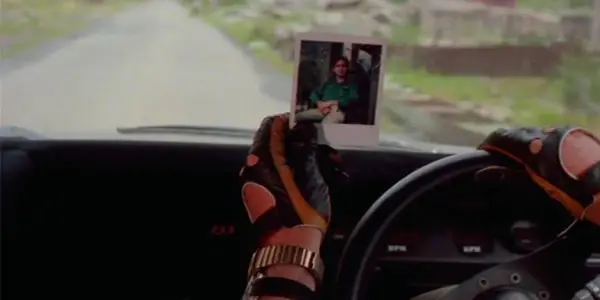
A quirky cousin to the Mad Max franchise, The Chain Reaction is an independently produced car chase/dystopian road movie directed by Ian Barry, with the driving scenes directed by Mad Max’s George Miller. The other connection to MAD MAX is the overlap of several actors, such as Steve Bisley (who plays the main role here as Larry), Hugh Keays-Byrne (as a friendly lawyer friend of Larry) and an uncredited cameo by Mel Gibson (who appears for only 1 minute as a mechanic).
Whilst the film has many elements of the original Mad Max film, it’s a very different creature. The film is about Larry and Carmel, a vacationing couple that find and shelter Heinrich Schmidt, a survivor of a nuclear plant meltdown, who must warn the public of the effects of the surrounding areas. A corrupt police force and the mysterious forces of the nuclear plant start to close in on the trio, so Larry must use his great driving skills to get everyone to safety.
Due to its independent/low budget nature, it follows the practice of many similar B-Movies, where a lot of the production funds are put into the start and end of the film, which houses the best action scenes of the film. Some nice practical car chase work is done, which hooks the viewer, but the middle is quite meandering and gets a bit boring. The film is commenting on the dangers of nuclear power and the physical effect on human life, adding some more darker layers than seen in other traditional car B-Movies. A unique little Australian film, the director Ian Barry only went on to make one more feature after this and loads of TV work (much like Miracle Mile’s Steve De Jarnatt)
4. The China Syndrome (1979, James Bridges)

A mix of condemning both the media and the nuclear power industry, The China Syndrome is an engaging thriller which has great performances with some nice tension throughout. The China Syndrome is about opportunistic reporter Kimberly (Jane Fonda) and her small news crew (including cameraman Michael Douglas) who witness an accident at a nuclear power plant which is immediately covered up, leading to Kimberly digging further to get the truth. She is aided by Jack Godell (the always great Jack Lemmon), employee of the nuclear power plant who is concerned about the safety on the plant and what it could cause.
Whilst not based on a true story or anything and some of the logic of the film is quite stretched, some of the scenarios in the film are based on actual occurrences, which really reminds the audience of how dangerous nuclear energy is. The great performances of the crew really elevate the film, who really humanise the situations they are placed in and really ground the more ominous political paranoia side of the story.
5. Damnation Alley (1977, Jack Smight)

In a world ravaged by nuclear war (caused by World War 3 in the film), a group of survivors band together in a giant camper-van like buggy across desolate wastelands in order to find more survivors. Whilst the film sounds quite generic, its B-Movie qualities and old school appeal help the film and today has an underground audience because of its fun sci-fi sensibilities. Some of the car shots in the film seem very reminiscent of the Mad Max series (including one of the camper van entering a giant sandstorm that seems very similar to one seen in Fury Road) and have mix of cool practical effects and poorly aged computer generated effects.
Based on a book by Roger Zelanzey (more of a loose adaptation) the film was a part of the large wave of apocalypse-related films which came out during the 1970’s, with big hits being On the Beach, Dawn of the Dead, The Omega Man and A Boy and his Dog, which meant that by the time Damnation Alley came out, which didn’t feature any big stars, it under-performed at the box office. The film quickly left theatres, where it generated a small income by being partnered with various films at the drive-in, which was the lifespan for many B-Movies during the 60’s and 70’s. Not the greatest film, but an entertaining apocalyptic romp which features one scene which will freak out anyone who hates c*ckroaches (as it features several hundred live roaches).
6. Fail-Safe (1964, Sidney Lumet)
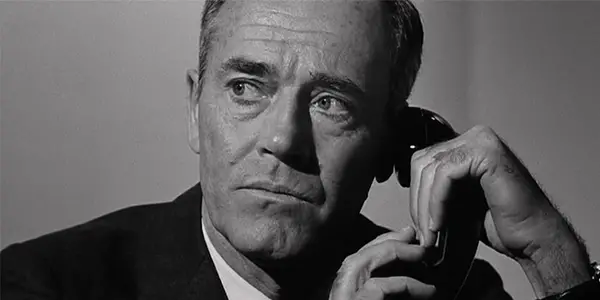
Made by Columbia Pictures in the period after the Cuban Missile Crisis, Columbia made this and Dr. Strangelove at the same time, which lead to a lawsuit by Stanley Kubrick to try and delay the release of this film due to their close similarity. The biggest difference being the satirical nature of Kubrick’s film, whilst Fail-Safe takes the more serious approach.
Fail-Safe, based on a novel by Eugene Burdick and Harvey Wheeler, tells the fictional tale of a Cold War nuclear crisis, where American planes are sent to detonate nuclear warheads on Moscow, but the order was sent by accident. Can the President (Henry Fonda) and his assorted crew (including the always great Walter Matthau) save the day?
The film toys with different scenarios of what would happen if nuclear war was about to start and Lumet makes some great decisions on how to shoot the film. Fonda’s President is constantly shot in close, tight shots, creeping in closer as the claustrophobia heightens and the tension thickens as the planes get closer to Moscow. The film still holds up today due to its bleak message about Nuclear war, its great acting cast and Lumet’s subtle direction of a very tense and sadly realistic scenario.
7. Godzilla (Gojira) (1954, Ishirō Honda)
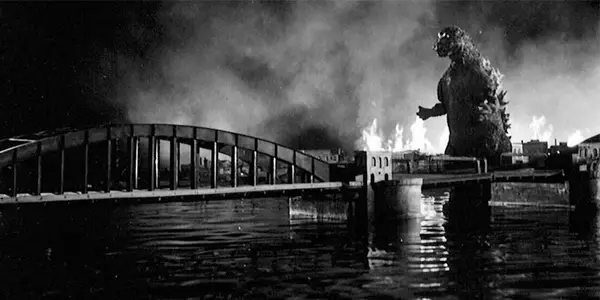
The ultimate nuclear themed movie! Godzilla is a film which doesn’t need much introduction, its effect on pop culture and film history is still being felt today. Godzilla is a film which has had its public image shaped by its sequels (much like Rambo, Mad Max and Die Hard), as everyone expects a Godzilla film to be a cheap and flimsy spectacle of a man in a rubber suit battling various creatures, from MechaGodzilla to Mothra.
The original Godzilla plants Godzilla as the main antagonist, his actions being a very thin metaphor for nuclear energy and the destructive effects caused by its presence. The film doesn’t hide this, with the characters talking directly to the camera warning about the negative effects of nuclear power. The character was so popular though, in Terminator 2 like fashion, the antagonist was shifted to a friendly protagonist in all the sequels, where he helped Japan fight various different creatures in over 30 films in a time span of 60 years (the longest running film franchise of all time). The film has been remade twice by Americans, one being the awful 1998 Roland Emmerich film and the misguided Gareth Edwards version from last year.
Due to the failure of Emmerich’s film, when Japan decided to bring the character back to its traditional roots, the creature was renamed ‘Zilla, as they felt the American creature was so mishandled it ruined the point of the character. One of the subsequent films to feature Zilla (Godzilla: Final Wars) featured a fight scene between Zilla and Emmerich’s Godzilla, where Zilla kicked him into the Sydney Opera House whilst everyone celebrated.
Honda’s 1954 Godzilla is an all time classic and whilst most film lovers have seen it, anyone who hasn’t should definitely check it out and not let the subpar sequels put you off it. Make sure to check out the Japanese original, not the American re-release which shoe horned random scenes of Raymond Burr staring out the window and removing a lot of the contextual Japanese scenes, focusing purely on the violence.
What are some other nuclear-based films we missed that you can recommend?
(top image: A Boy and His Dog – source: Anglo-EMI Film Distributors)
Does content like this matter to you?
Become a Member and support film journalism. Unlock access to all of Film Inquiry`s great articles. Join a community of like-minded readers who are passionate about cinema - get access to our private members Network, give back to independent filmmakers, and more.













